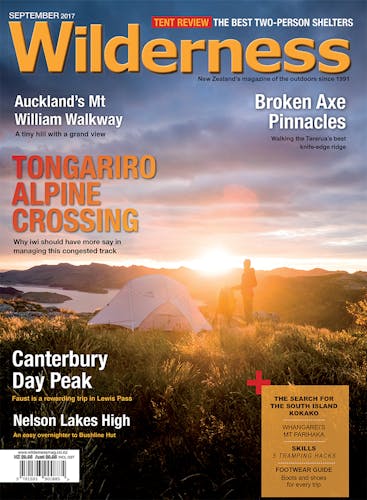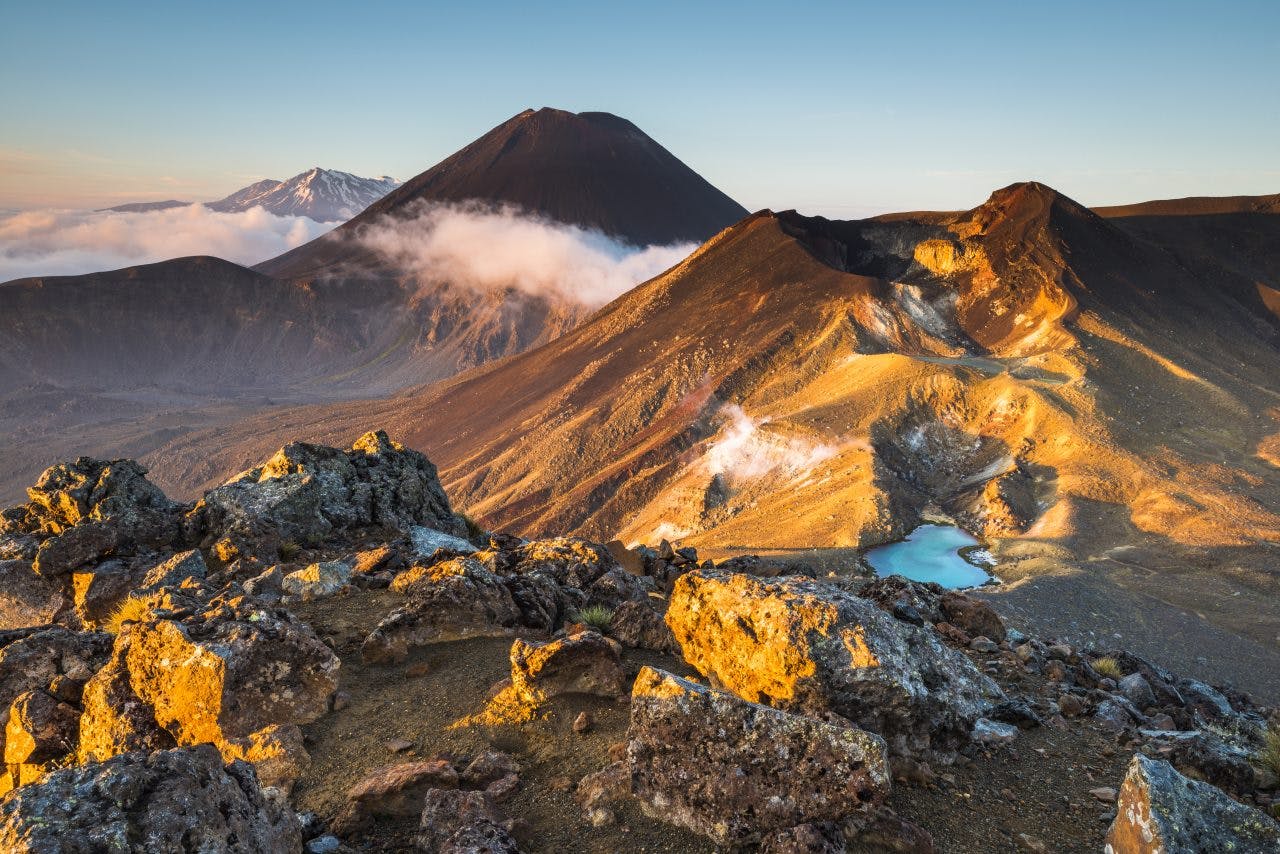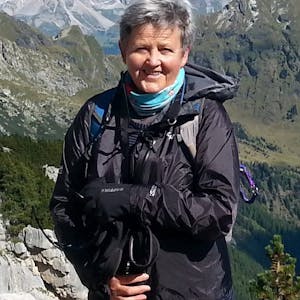As another season on the bucket-list Tongariro Alpine Crossing looms, Kathy Ombler asked Te Ngaehe Wanikau, spokesman for local hapu Ngāti Hikairo, for an iwi perspective of the mountain, and future track management
The personification of Te Awa Whanganui and Te Urewera has broken the boundaries of management of natural places. This recognition and respect of the spirituality of the land and water, and iwi associations, while also continuing to manage these places for adventure, escape, rejuvenation and inspiration for everyone, is world leading.
What, then, of the hallowed Tongariro, the mountain central to the world’s first dual cultural and natural World Heritage site whose flanks are covered with summer crowds; conga-like lines of people, and their litter, with no sign yet, despite review after review, of any significant management solution to the current situation?
Te Ngaehe Wanikau is tumuaki; leader and spokesman for Te Rūnanganui o Ngāti Hikairo ki Tongariro, the iwi authority for Tongariro and a hapu of Ngāti Tūwharetoa. He also sits with Tūwharetoa paramount chief, Sir Tumu Te Heuheu, on the Tongariro Taupo Conservation Board. Asked about his connection with Tongariro, Wanikau talks about layers, dimensions, and ‘ultra logic’ reflection.
“We go back 30 generations to our ancestor Ngātoro-i-rangi, when he first arrived in these lands from Raiatea in Tahiti on the waka Te Arawa, and came inland to the maunga, Tongariro. From Ngātoro-i-rangi there is unbroken occupation to today, and we can tell you every story from every generation from then.”
All over the maunga, those stories add texture, where the physical and the spiritual and the tangible merge and overlap, says Wanikau. “What makes Tongariro so special to you is that you become an ultra logical reflection of that environment, you merge into that place, it’s inseparable.
“It’s 30 generations of a society placing the afterbirth of their children in the area, which is life. When those same populations pass away, it’s putting them back in that place. These are layers that build a texture of a societal occupancy.”
Wanikau says his people see the maunga in four dimensions.
“We see it in a spiritual, cultural and physical dimension and we see a fourth. It’s something we’ve seen since we were kids. It’s the dimension of on every breeze is the whisper of one of our tupuna, every shadow of the changing faces of that maunga tells a story. A certain weather pattern happens and we go back to a story from three hundred years ago with that same weather pattern, and we fit it. That’s the connection, when you can go back into your history and none of it is written and we still have people who can do that.”
He looks to Gallipoli, to help explain.
“On the Turkish coastline there’s one of the crappiest beaches I’ve ever seen. So when Kiwi stand on this beach what causes their hair to stand up, and their tears to fall? They sleep there the night before commemorations and have in many instances one of the most powerful, emotional experiences of their lives. Why? Because they are connected by the story. By something so significant that has happened in their communal past it’s become part of a collective memory that is so powerful it does that.
“That’s Tongariro, to us.”
Desecrate that beach and tell me how you would feel, asks Wanikau. “There would be an outrage beyond belief in this country.
“That’s Tongariro, to us.”
Gallipoli is one event in history, Wanikau says. Tūwharetoa have thousands; spiritual, cultural and physical, connected to the mountain.
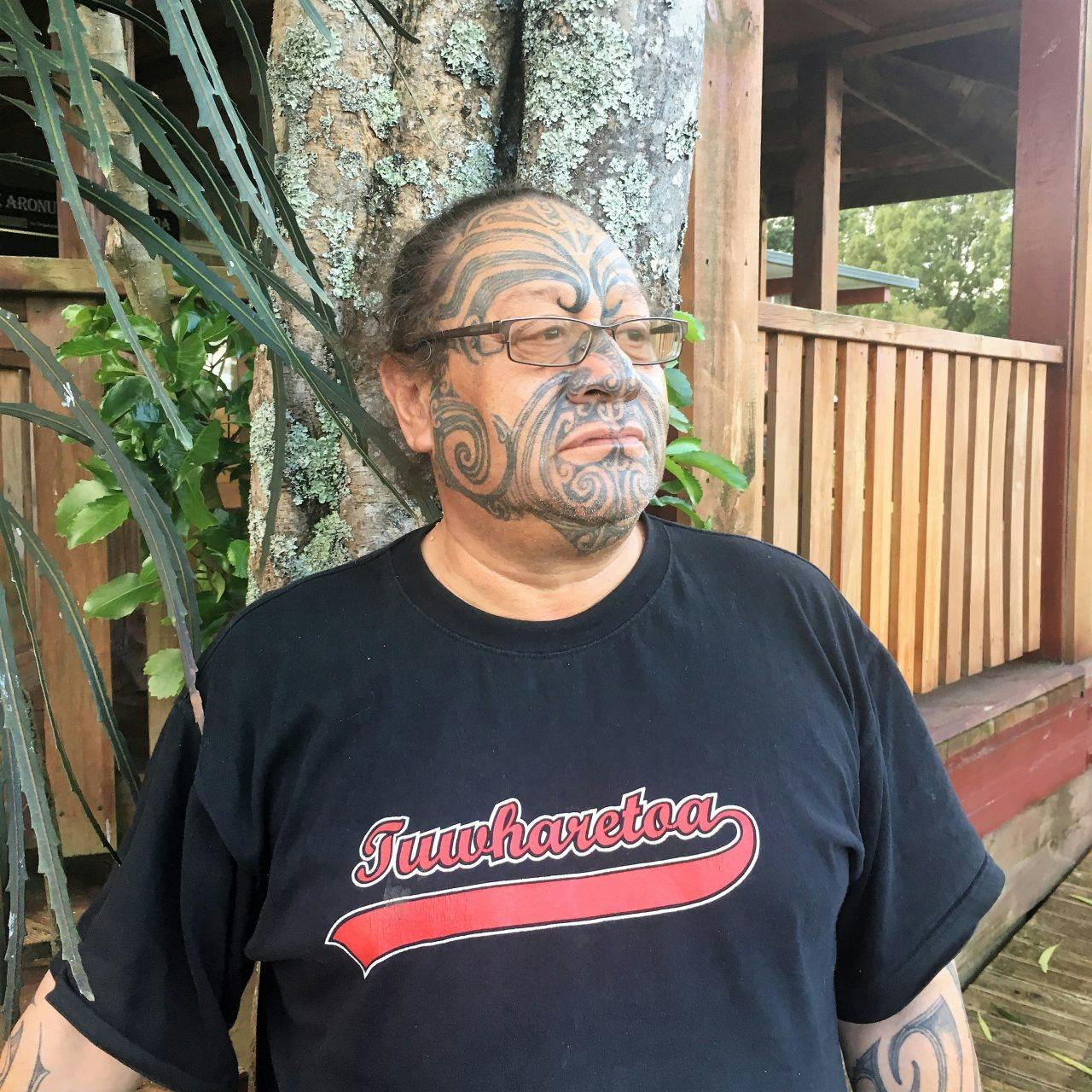
Te Ngaehe Wanikau is seeking better management for the Tongariro Alpine Crossing, and better understanding of the cultural significance of the maunga. Photo: Supplied
He feels it a touch ironic that it was an international body, UNESCO, who understood this connection and, for the first time, a World Heritage site was recognised for both its cultural and physical values.
“They got what Sir Tumu (Te Heuheu) was talking about so well they asked him to be the next World Heritage chair!
“Now, we are asking the question of Aotearoa, can you support that embodiment? It’s not about being exclusive. Can you share our maunga in such a way it preserves the physical and spiritual integrity of that place. Just as we would all expect of Gallipoli. Because taking care of the spiritual and physical well-being of the maunga is actually a good thing for all people.”
Maori don’t have a monopoly on loving that place, he adds. “We’re not saying we have exclusive rights to love that environment and that maunga passionately. We know many people do.
“It’s just that we can’t continue to have unmanaged situations up there. The amount of rubbish left on the mountain, for example.”
Wanikau says that Ngati Hikairo took nine rangatahi (young people) onto the crossing to look for rubbish and in two days they filled 18 industrial sized rubbish bags with plastics and cans.
Then there’s that other rubbish beside the track. “People say it will break down, but it’s poos! One day Bubs Smith (Ngāti Hikairo and DOC conservation worker) found 16 instances in just two hours, and there are toilets up there to use. How do we educate people that it’s unacceptable? We get asked – is it culturally offensive to us that people do poos on our maunga? And I go, do you mean it’s not offensive to you? That’s offensive in any culture.”
The growth of commercialism is another bugbear for Wanikau. The crossing is promoted internationally by Tourism New Zealand, regional tourism marketing organisations and private operators. More than 30 companies hold DOC concessions to provide transport or guiding services for the crossing. Their brochures proliferate accommodation and visitor centres throughout the region, and every summer morning a dusty procession of commercial buses and vans crowd into Mangatepopo car park where the crossing begins.
“The commercial influence now is blatant,” says Wanikau. “We say there is room for commercial but that commercial has to fit onto the site, into the environment, because the well-being of the site is paramount. If the only reason you’re there is commercial, we’re fine with that, but don’t make the site fit into your business. Don’t make it subservient to what you want to do because that’s not sustainable.”
Let’s then go to the safety and well being of walkers. “We’ve never not thought of ourselves as the guardians here and the worst thing that can happen within our rohe is that, through bad management or just a lack of caring, people are hurt, or people die, on the maunga.”
Wanikau talks about the experiences of Ngāti Hikairo people, helping in the Mangatepopo car park and warning under-prepared walkers of the exposed conditions on the crossing. “People have turned up in their jandals, with their young kids, and with no winter clothing. By law we cannot stop people going up there, but as a human being? Bubs Smith said on so many occasions there were people who he knew shouldn’t have gone up the mountain. Some he begged not to, and he was rescuing them a few hours later. It’s wrong.
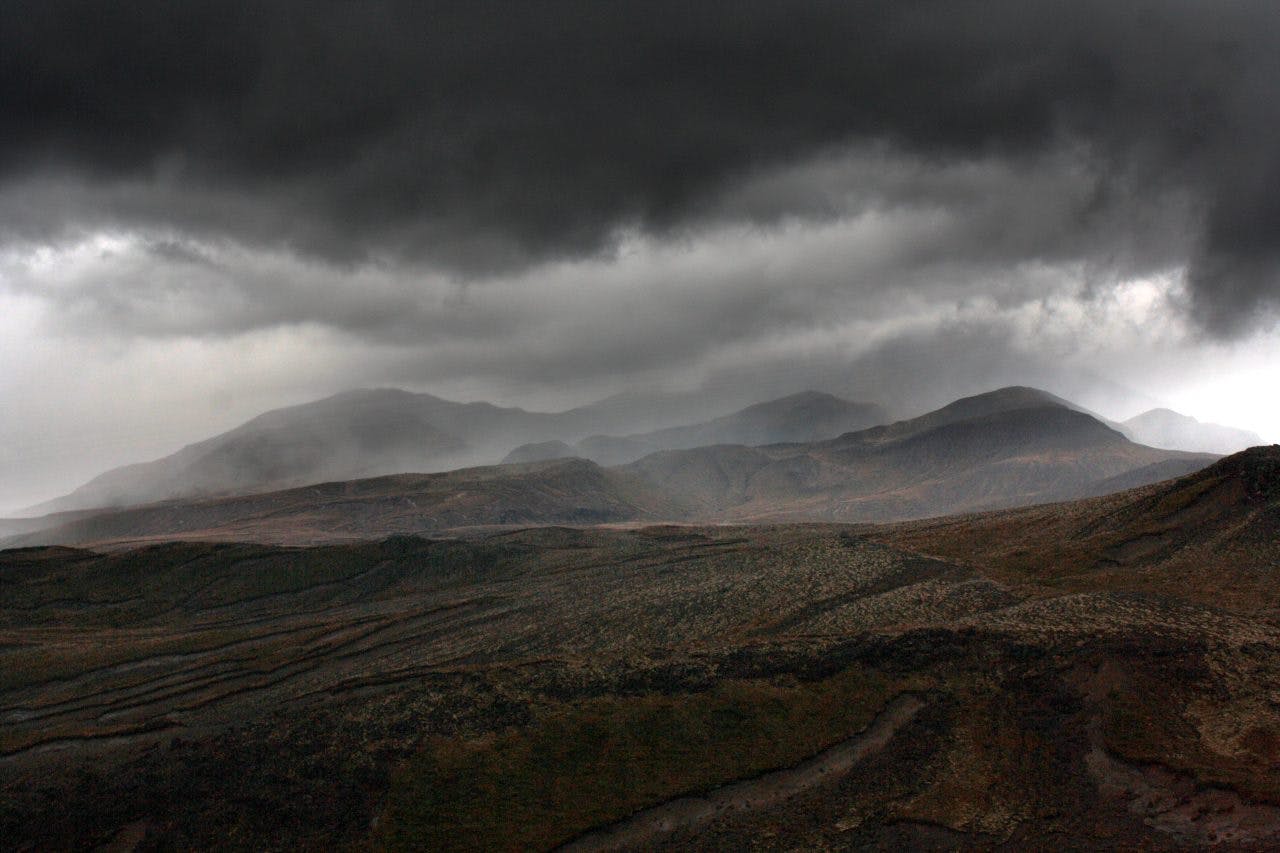
Weather changes quickly in Tongariro National Park – a concern for local Maori who don’t want to see ill-prepared walkers injured or scared off while walking the TAC. Photo: Stephen Rawlingson
“So, it’s not only the impact of people on the maunga, it’s also the impact of the maunga on the people because of no management. People have been left vulnerable. Unsafe. It’s heartbreaking to hear of people going away hating the name Tongariro, because of their bad experience.”
Ngāti Hikairo is working with DOC and other stakeholder groups to address crowding issues on the crossing, however Wanikau is frustrated by inaction. “There has been review after review about overcrowding on the crossing, going back to 2006, but there is never any action on the recommendations. There is almost a paralysing fear of doing something in case it impacts negatively, so it seems it is safer to do nothing.”
Meanwhile, Ngāti Hikairo and Ngāti Tūwharetoa have prepared a vision, addressing the values of the maunga, of the people, and of guardianship, that embraces all iwi of the greater Tongariro area; the Kahui Maunga.
“Basically, this says the spiritual, cultural and physical well-being of the maunga and its environment are paramount,” says Wanikau. “Everything else fits into that. Our hope is that it will also have a physical application in management and operations; that any action or activity within the area will be based firmly in these values.
“The vision seems a simple and broad statement, yet what it asks for is just not happening now. It’s as if we’ll just keep piling it on until something cracks.”
Wanikau believes that capping numbers, through education rather than exclusion, and more of a welcoming, human presence on the maunga, will help.
“The less it is legislated the better. We have to change the mindset. Education has to be the driver rather than enforcement. A society’s got to want to, not be made to, and for people to want to they have to have a sense of ownership, to feel like they belong.
“I think that was the intention of Horonuku Te Heuheu and the other rangatira, in 1886.”
Wanikau refers to the proposal, put to Queen Victoria and officially adopted by the Crown in 1887, for the mountain peaks of Tongariro, Ngauruhoe and Ruapehu, to be protected from development. He says this protection, which led to the creation of Tongariro National Park, was intended as a tuku, not a gift as it is often described.
“A tuku is a covenant for protection, to hold this area sacred for the benefit of all future generations. All. Not just Tūwharetoa,” says Wanikau. “We’re two people together, side by side, to do this together.”
Educating visitors about other opportunities in the park will help avoid overcrowding on the crossing, Wanikau says. “The crossing has become a bucket list yet there are so many other beautiful places within the national park; other walks, the Northern Circuit, Taranaki Falls, Round the Mountain.
“We believe this can enhance it for everyone, the Kiwi weekender who wants to get out of Lambton Quay, parents who want to share special time with the kids, plus the schools we get coming in. We’re seeing a rise in the weekender ‘spur of the moment’ Kiwi coming here. Kiwis should always have the right of accessibility.”
A presence on the mountain is also needed and Wanikau supports a proposal, currently under consideration, for Ngāti Hikairo people to officially welcome walkers as they arrive at the crossing.
“We’d like to be greeting visitors, sharing our stories, telling people the meaning of the place and what’s involved in the walk. There’s currently no presence; no ranger, park or iwi person. There’s nothing. I know Jo Kiwi is going to say bloody hell, we don’t need this but there are reasons. These are people’s lives, there are children, there are people who come here from overseas who don’t know what they are going into.”
It is not about excluding people, it’s about looking after them better, he says. “First and foremost it’s about looking after the maunga, but looking after the maunga is also about looking after the people, because if there is a tragedy up there that will impact on the spiritual well-being of our maunga”
Tūwharetoa and DOC are working together as best they can, says Wanikau. “We have a high level of confidence with many individuals in DOC and we hope with our help and support we can influence the Department and the Department will influence us. It’s a reciprocal arrangement.”
Two alternative walks to the Tongariro Alpine Crossing
1. Upper and Lower Tama
For views of Ngauruhoe and Ruapehu, visit these two lakes on the track from Whakapapa Village. At the end of Upper Tama Track, climb the spur leading to Pt1650 and the base of Ngauruhoe for a more isolated experience.
2. Oturere Hut
From the Ketetahi side of the TAC, walk to Oturere Hut for the night. You’ll see the main highlights of the TAC: Blue Lake and Emerald Lakes, but for the majority of the walk you’ll have the track to yourself. Rise early to catch the sunrise from Red Crater on your return.





